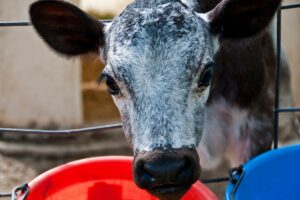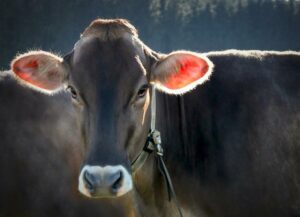Fernando Diaz
Most of the metabolic problems of the dairy cow happen during the first two weeks of lactation. In a review of several experiments, researchers found that approximately one out of three fresh cows have at least one clinical disease during the first 3 weeks of lactation. Consequently, culling rate increases during early lactation. It has been reported nearly 25% of the cows that leave herds do so during the first 60 days in milk (DIM).
A recent study conducted in a 5,000-cow dairy from Florida evaluated the effects of clinical diseases during the fresh period (21 DEL) on milk production, reproduction, and culling rate of Holstein cows through the entire lactation (305 DIM).
The researchers (Carvalho et al., 2019) classified 5,085 cows (1,814 primiparous and 3,271 multiparous) according to the incidence of clinical disease during the first 21 DIM as healthy cows or cows with either single or multiple clinical diseases: retained placenta/metritis, clinical mastitis, lameness, digestive problems, and respiratory problems.
During the first 21 DIM, 30.2% of the fresh cows had at least one clinical disease: retained placenta/metritis 21.6%, mastitis 5.7%, lameness 1.5%, digestive problem 5.5%, and respiratory problem 0.6%.
- Milk production: clinical disease during the first 21 DIM decreased the 305-d yields of milk. While healthy fresh cows produced 10,499 kg of energy-corrected milk during 305 DIM, cows with a single or multiple clinical diseases during the fresh period produced 10,104 and 9,783 kg (3.8 and 6.8% less), respectively.
- Reproductive performance: although no differences in time to first breeding were observed (averaged 81 days), cows that had one or multiple clinical diseases had a reduction (6.6 and a 17.8%, respectively) in pregnancy rate through 305 DIM. In addition, pregnancy loss after day 45 of gestation for all breedings performed through 305 DIM was greater in cows with clinical diseases (23.6%) than in healthy cows (13.9%).
- Culling rate: as expected, a greater proportion of cows that suffered clinical diseases during the fresh period left the herd. The percentage of cows culled by 305 DIM increased from 23% in healthy fresh cows to 36% and 54% in those diagnosed with a single and multiple clinical diseases during the first 21 DIM, respectively.
In conclusion, this study shows the long-lasting detrimental consequences of clinical diseases during the fresh period in milk production, reproduction, and culling of dairy cows. Good management practices along with an adequate nutrition program should be implemented during the transition period to prevent clinical diseases and the economical losses associated with them.
Reference
R. Carvalho, F. Peñagaricano, J. E. P. Santos, T. J. DeVries, B. W. McBride, and E. S. Ribeiro. 2019. Long-term effects of postpartum clinical disease on milk production, reproduction, and culling of dairy cows. J. Dairy Sci. J. Dairy Sci. 102:11701–11717.
© 2019 Dairy Knowledge Center, LLC. All Rights Reserved.









